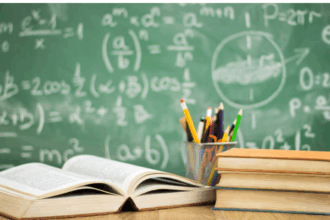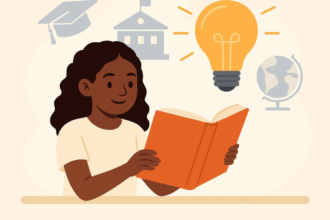Introduction to Robots as Teachers
Imagine walking into a classroom where the teacher is not human but a robot. This scenario may sound like something straight out of science fiction, yet advancements in technology are pushing us closer to this reality every day. With the rise of AI-powered tutors and interactive learning systems, robots in education are becoming more than just an idea—they’re evolving into practical tools for teaching and engagement. As we explore the future of learning, it’s essential to consider how these robotic educators can reshape our approach to knowledge acquisition. Are they merely futuristic gadgets or game-changers that could redefine educational experiences? Let’s dive deeper into this fascinating topic and uncover what lies ahead for both students and teachers alike.
Advantages of Robot Teachers
Robot teachers bring a host of advantages to the classroom. They can provide personalized learning experiences tailored to each student’s pace and style. This adaptability allows for a more engaging educational environment.
Moreover, they offer consistent support without fatigue. Unlike human educators, robots don’t need breaks or time off, ensuring that students receive uninterrupted assistance when needed.
Another benefit is their ability to incorporate technology seamlessly into lessons. With AI-powered tutors, students interact with advanced learning tools designed to enhance understanding.
Additionally, robot teachers can help bridge gaps in resources and availability in underserved areas. They can reach classrooms lacking qualified instructors or materials, making quality education accessible to all.
These robotic educators foster curiosity about technology and encourage STEM interest among young learners. A future where robots play a key role in education could inspire the next generation of innovators.
Limitations and Concerns
While the idea of robots in education sparks excitement, several limitations and concerns warrant attention. One significant issue is the lack of emotional intelligence in AI-powered tutors. Robots may struggle to understand students’ feelings or respond empathetically during challenging moments.
Moreover, reliance on technology could diminish interpersonal skills among students. Human interaction plays a crucial role in developing communication abilities and social awareness.
Data privacy also raises eyebrows when integrating robots into classrooms. Gathering information about student performance poses risks if not handled securely.
Additionally, there’s the risk of unequal access to these advanced tools. Not every school has resources for cutting-edge technology, potentially widening the educational gap between affluent and underprivileged communities.
Teacher job displacement looms large as automation becomes more prevalent. The transition must be carefully managed to ensure human educators remain integral to learning environments.
Current Use of Robot Teachers in Education
Across the globe, schools are beginning to integrate robots in education. These AI-powered tutors serve various roles, from teaching languages to assisting with math problems.
In some classrooms, robotic assistants help personalize learning experiences. They can adapt lessons based on individual student performance and provide instant feedback.
For example, humanoid robots like Pepper engage students in interactive activities. Their ability to convey emotions helps create a more relatable learning environment.
Moreover, countries like Japan have led initiatives allowing robots to assist teachers directly. This collaboration allows educators to focus more on critical thinking skills while robots handle repetitive tasks.
These early implementations showcase how technology can enhance educational frameworks without replacing human interaction entirely. As advancements continue, the presence of robot teachers may become commonplace in classrooms worldwide.
Potential Impact on Students and Teachers
The integration of robots in education could reshape the classroom dynamic. Students may find learning more interactive and engaging, as AI-powered tutors can adapt to individual needs. This personalization fosters a love for learning that traditional methods might struggle to ignite.
Teachers may experience relief from repetitive tasks. With robot assistants handling administrative duties or basic instruction, educators can focus on mentorship and creative lesson planning. The human element remains vital even in an AI-driven environment.
However, reliance on technology raises questions about interpersonal skills. Will students develop empathy and collaboration when interacting primarily with machines?
As robots take on teaching roles, it will be crucial to strike a balance between tech and human interaction. This evolution could redefine educational relationships but must be managed thoughtfully to ensure holistic development for both students and teachers alike.
Ethical Considerations
As robots increasingly enter classrooms, ethical considerations become paramount. One major concern is the potential loss of human interaction. Students thrive on emotional connections with teachers, which robots simply cannot replicate.
Data privacy also raises significant questions. AI-powered tutors collect vast amounts of information about students’ learning habits and personal lives. Safeguarding this data is crucial to prevent misuse or breaches.
Equity in education must be addressed as well. Access to advanced technology may be limited for underfunded schools, potentially widening the educational gap between affluent and disadvantaged communities.
Moreover, there’s a risk that an over-reliance on robotic assistance could hinder critical thinking skills among students. If they lean too heavily on machines for answers, can we ensure they develop problem-solving abilities?
Accountability becomes complex when mistakes occur in teaching scenarios involving robots. Who bears responsibility—the educators who implement them or the developers behind these technologies?
Future Possibilities and Challenges
As we look ahead, the integration of robots in education opens up a realm of exciting possibilities. Imagine classrooms where AI-powered tutors personalize learning experiences for each student. These robots could analyze performance and adjust teaching methods in real-time.
However, challenges are also on the horizon. Ensuring that these technologies are accessible to all schools is crucial. There’s a risk that affluent institutions might benefit more than underfunded ones.
Moreover, there’s the concern of human connection. Can robot teachers replicate the emotional support provided by a dedicated educator? Students thrive on relationships built with their teachers, which raises questions about how much technology should intervene.
Another challenge lies in training educators to work alongside robotic assistants. They will need new skills to effectively collaborate with AI tools and integrate them into traditional curriculums seamlessly.
Conclusion
As technology continues to evolve, the conversation around robots in education intensifies. The potential for AI-powered tutors and robotic educators presents exciting opportunities and complex challenges.
The integration of robots into classrooms could redefine teaching methods, making learning more interactive and personalized. These advancements may enhance student engagement while alleviating some pressures faced by teachers today.
However, ethical considerations must accompany this progress. It’s essential to balance technological innovation with the human elements that are vital to effective education. Teachers play an indispensable role in fostering emotional intelligence and critical thinking skills—qualities that machines can’t replicate.
The future of learning may very well include a symbiotic relationship between humans and robots, where each complements the other’s strengths. As we navigate these changes, it will be crucial to remain vigilant about the implications on both students’ educational experiences and teachers’ roles within them.
Embracing this shift could lead us toward a more tailored approach to learning—one that harnesses technology’s power while honoring the irreplaceable value of human connection in education.










